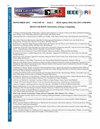An Automated Data-Gathering Tool for Earth Observation CubeSats Classification
IF 1.3
4区 工程技术
Q3 COMPUTER SCIENCE, INFORMATION SYSTEMS
引用次数: 0
Abstract
This study presents an automated tool designed for the classification and analysis of Earth Observation CubeSats, with focus in the low Earth orbit (LEO) region (200-1,000 km altitude). Leveraging an integration of data from different reputable databases, the tool provides a detailed data repository which facilitates analysis of CubeSat deployment trends, configurations, and operational orbits, aiding in mission design. A key finding from our analysis is the pronounced concentration of CubeSats in certain LEO regions: Sun-Synchronus and ISS, with the United States as a leading contributor in CubeSat deployments. Moreover, the tool offers a comprehensive estimation of lifecycle costs associated with CubeSat missions, highlighting a trend of decreasing costs among major CubeSat developers such as Planet and Spire. This cost reduction trend is attributed to economies of scale, implementation of ground segment infrastructure, and vertical integration in the development of the satellites. By providing a detailed dataset, and classification of CubeSats, along with an analysis of cost trends, this research contributes valuable insights for the planning and cost optimization of future space missions. The findings underscore the growing commercial viability and strategic importance of CubeSats in the evolving landscape of Earth observation and new space.用于地球观测立方体卫星分类的自动数据收集工具
本研究提出了一种自动工具,用于对地球观测立方体卫星进行分类和分析,重点是低地球轨道(LEO)区域(200-1,000 公里高度)。通过整合来自不同知名数据库的数据,该工具提供了一个详细的数据存储库,有助于分析立方体卫星的部署趋势、配置和运行轨道,从而为任务设计提供帮助。我们分析的一个重要发现是立方体卫星明显集中在某些低地轨道区域:太阳同步轨道和国际空间站,其中美国是立方体卫星部署的主要贡献者。此外,该工具还对与立方体卫星任务相关的生命周期成本进行了全面估算,突出表明 Planet 和 Spire 等主要立方体卫星开发商的成本呈下降趋势。这种成本下降趋势归因于规模经济、地面段基础设施的实施以及卫星开发的垂直整合。本研究通过提供详细的数据集、立方体卫星分类以及成本趋势分析,为未来太空任务的规划和成本优化提供了有价值的见解。研究结果凸显了立方体卫星在不断发展的地球观测和新空间领域中日益增长的商业可行性和战略重要性。
本文章由计算机程序翻译,如有差异,请以英文原文为准。
求助全文
约1分钟内获得全文
求助全文
来源期刊

IEEE Latin America Transactions
COMPUTER SCIENCE, INFORMATION SYSTEMS-ENGINEERING, ELECTRICAL & ELECTRONIC
CiteScore
3.50
自引率
7.70%
发文量
192
审稿时长
3-8 weeks
期刊介绍:
IEEE Latin America Transactions (IEEE LATAM) is an interdisciplinary journal focused on the dissemination of original and quality research papers / review articles in Spanish and Portuguese of emerging topics in three main areas: Computing, Electric Energy and Electronics. Some of the sub-areas of the journal are, but not limited to: Automatic control, communications, instrumentation, artificial intelligence, power and industrial electronics, fault diagnosis and detection, transportation electrification, internet of things, electrical machines, circuits and systems, biomedicine and biomedical / haptic applications, secure communications, robotics, sensors and actuators, computer networks, smart grids, among others.
 求助内容:
求助内容: 应助结果提醒方式:
应助结果提醒方式:


